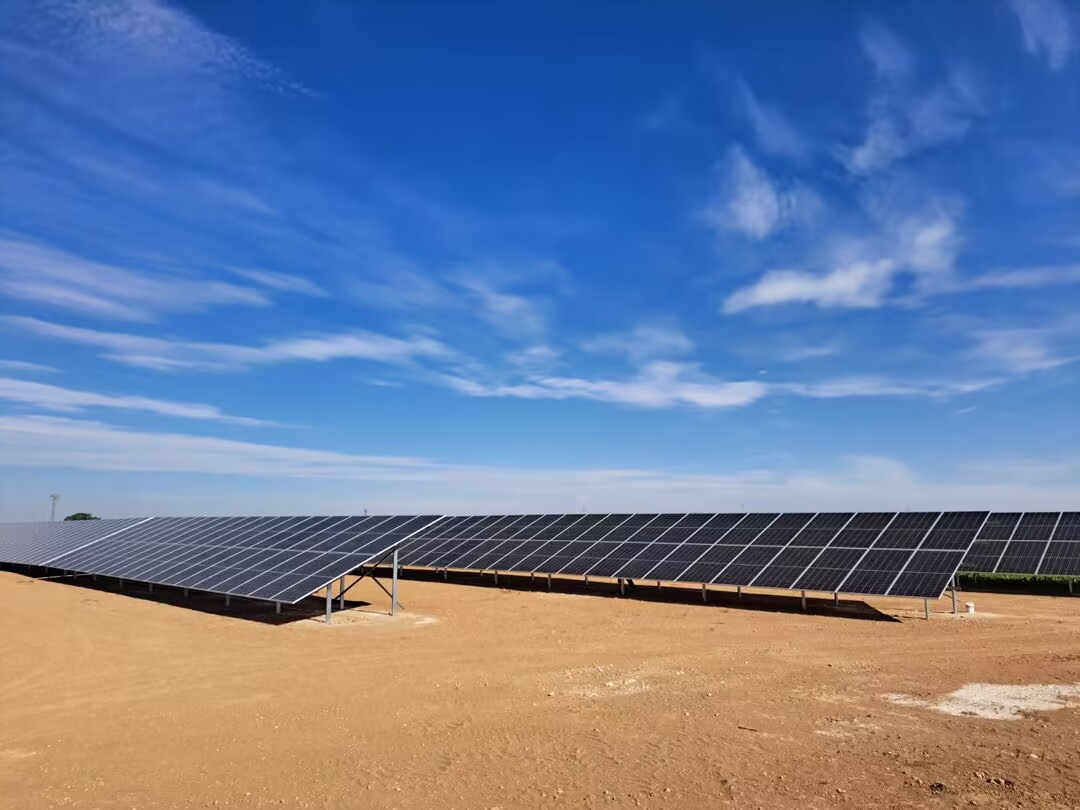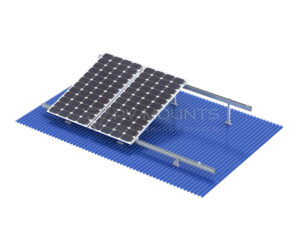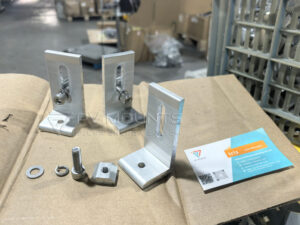Amikor a fotovoltaikus (PV) tartószerkezetek anyagának kiválasztására kerül sor, általában Q235B acél és alumíniumötvözetből készült AL6005-T5 extrudált profilokat alkalmaz. Mindegyik anyagnak megvannak az előnyei és megfontolásai, és a választás különböző tényezőktől függ. Hasonlítsuk össze az acélt és az alumíniumot a PV tartószerkezetekhez:
1.Strength és tartósság
- Acél
Nagy szilárdságának és tartósságának köszönhetően alkalmas nagy és nehéz PV-tömbökhöz. Kiváló teherbíró képességgel rendelkezik, és ellenáll a zord időjárási körülményeknek, beleértve az erős szelet és a nagy hóterhelést is. - Aalumínium
Bár könnyű, szerkezetileg mégis robusztus. Jó szilárdság/tömeg aránnyal és korrózióállósággal rendelkezik, így számos PV-berendezéshez alkalmas.
A szilárdság szempontjából az AL6005-T5 alumíniumötvözet körülbelül 68%-69% a Q235 B acélból. Ezért az acél általában jobb, mint az alumíniumötvözet az erős szélben és viszonylag nagy fesztávú területeken.
2.Súly és kezelés
- Acél
Sűrűbb és nehezebb, mint az alumínium, ami megnehezítheti a kezelését és szállítását. A telepítés során több munkaerőt és felszerelést igényelhet, különösen a nagyobb szerkezetek esetében. - Alumínium
Könnyű, így könnyebb kezelni, szállítani és telepíteni. Előnyös lehet olyan projekteknél, ahol a súlycsökkentés prioritást élvez, vagy amikor a helyszín teherbírása korlátozott.
Megjelenés és korrózióállóság
- Acél
Általában tűzihorganyzott, permetezett, festett és így tovább. A megjelenés rosszabb, mint az alumíniumötvözet profiloké. Bár az acél hajlamos lehet a korrózióra, ez megfelelő felületkezeléssel, például horganyzással vagy védőbevonatokkal mérsékelhető. Megfelelő korrózióvédelemmel az acél relatív hosszú távú tartóssággal is rendelkezhet. - Alumínium
Az alumíniumötvözet-profilok felületkezelésére számos módszer létezik, mint például eloxálás, kémiai polírozás, fluorkarbon permetezés, elektroforetikus festés stb. A megjelenés gyönyörű és alkalmazkodik a különböző, erős korrózióval járó környezetekhez.Az alumínium természetesen védő oxidréteget képez, amely eredendően korrózióállóságot biztosít. Nem igényel további felületkezelést. Ez a tulajdonság teszi az alumíniumot megfelelő választássá a tengerparti területeken vagy magas páratartalmú helyeken található PV-berendezésekhez.
Jelenleg a konzol fő korróziógátló módszere az 55-80 μm vastagságú tűzihorganyzott acél és az 5-10 μm vastagságú anódos oxidációval ellátott alumíniumötvözet.
Normál körülmények között (C1-C4 környezet) a 80μm-es horganyzott vastagság több mint 20 évig biztosíthatja az acél használatát, de a magas páratartalmú ipari területeken vagy a magas sótartalmú tengerpartokon vagy akár a mérsékelt tengervízben a korrózió sebessége felgyorsul, és a horganyzott mennyiségnek 100μm. felett kell lennie, és rendszeres éves karbantartást igényel. Az alumíniumötvözetek tehát korrózióállóság szempontjából messze felülmúlják az acélt.
Költségek
- Acél
Az alumíniumhoz képest általában alacsonyabb anyagköltséggel rendelkezik. A telepítési költségek azonban magasabbak lehetnek a súlya, valamint a nehezebb berendezések és a több munkaerő szükségessége miatt. - Alumínium
Általában drágább, mint az acél. Könnyű súlya azonban segíthet csökkenteni a szállítási költségeket és a telepítési időt, ami ellensúlyozhatja a magasabb anyagköltséget.
Fenntarthatóság
- Acél
Újrahasznosítható, így környezetbarát megoldás. Élettartama végén könnyen újrahasznosítható, és más alkalmazásokhoz is felhasználható. - Alumínium
Emellett újrahasznosítható, és az újrahasznosítási folyamat jelentősen kevesebb energiát igényel, mint a szűz alumínium előállítása. Ez teszi az alumíniumot fenntartható választássá.
De az acélszerkezet karbantartási költségei évente 3%-tel nőnek, míg az alumíniumszerkezet alátámasztása alig igényel karbantartást és karbantartást, és az alumínium hasznosítási aránya 30 év után még mindig 65%, és az alumínium ára várhatóan évente 3%-tel nő.
A szekció sokszínűsége
- Acél
Általában hengerelt, öntött, hajlított, préselt és így tovább. A hengerlés jelenleg a hidegen alakított acél fő gyártási módszere. A szelvényt a görgőkerék-készlettel kell beállítani, de az általános gép véglegesítése után csak hasonló termékeket lehet előállítani, és a méret beállítható, de a szelvény alakja nem változtatható meg, például C-alakú acél, Z-alakú acél és más szelvények. A hengerlési gyártási módszer viszonylag rögzített, és a gyártási sebesség viszonylag gyors. - Alumínium
Az alumíniumötvözet-profilok általános feldolgozási módszerei közé tartozik az extrudálás, az öntés, a hajlítás, a bélyegzés és más módszerek. Az extrudálás a jelenlegi főáramú gyártási módszer. Az extrudáló szerszám kinyitásával bármilyen keresztmetszetű profil előállítható, és a gyártási sebesség viszonylag gyors.
Ebben az esetben, Itt van átfogó teljesítmény-összehasonlítás
1) Az acél nagy szilárdságú és kis alakváltozással rendelkezik terhelés alatt. Általában közönséges erőművekben vagy viszonylag nagy erőkkel rendelkező alkatrészekhez használják.
2) Az alumíniumötvözet profilok könnyűek, szép megjelenésűek és kiváló korrózióállóságúak. Általában háztartási tetőerőművekben és erős korróziós környezetben használják őket, amelyek teherbírást igényelnek.
Végső soron az acél vagy alumínium kiválasztása a fotovoltaikus tartószerkezetekhez olyan projektspecifikus tényezőktől függ, mint a létesítmény mérete, a terhelési követelmények, a költségvetés, a helyszíni körülmények (pl. szél- és hóterhelés, korróziós környezet) és a fenntarthatósági célok. Szívesen látjuk, ha konzultál szerkezeti mérnökünkkel, hogy értékelje ezeket a tényezőket, és meghatározza az Ön konkrét projektjéhez legmegfelelőbb anyagot.













